ama, mikimoto, pearl divers
Pearl Divers: Exploring the Fascinating World of Ama
James Lau
Posted on July 27, 2023
Share:
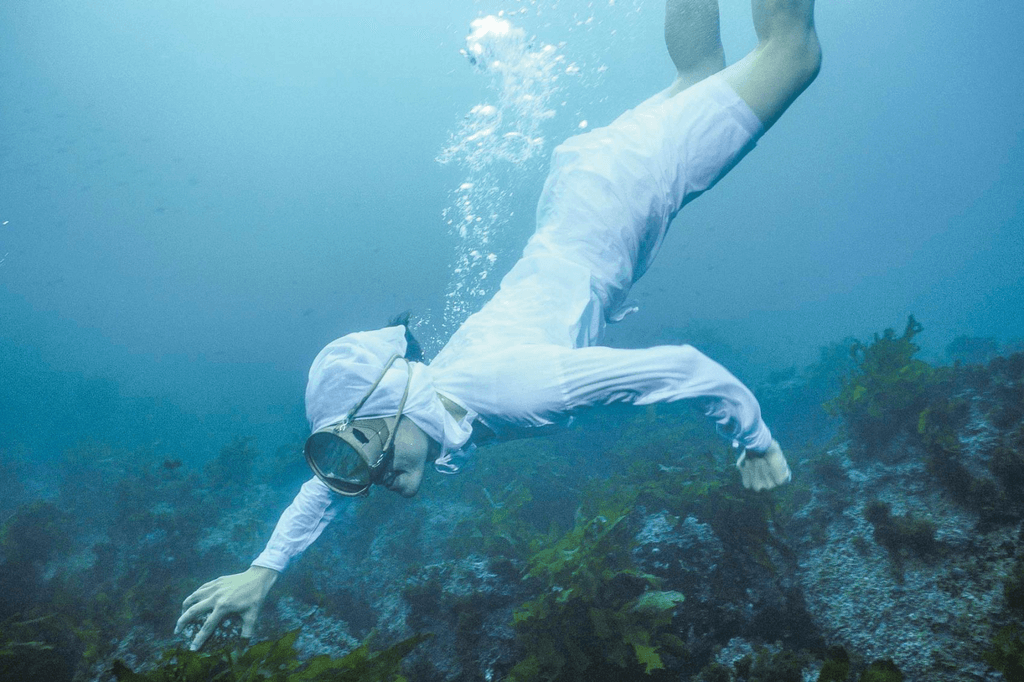
In coastal Japan, ama pearl divers, remarkable women, have practiced their craft for over two millennia. These fearless sea women collect pearls and treasures from ocean depths using exceptional breath-holding abilities. We’ll explore ama divers’ captivating world, rich history, rigorous training, and cultural legacy.
Where did the pearl divers come from?
The origins of ama pearl divers are in ancient Japan, where these remarkable women played a vital role in the coastal communities that relied on the gifts of the sea—the practice of ama diving dates back over two thousand years.
In the early days, ama divers focused primarily on gathering food resources from the ocean, such as abalone, sea cucumbers, and seaweed. They also developed swimming and breath-holding abilities, allowing them to venture into the depths of the sea to collect these valuable resources. As their skill and confidence grew, they began exploring the underwater world for other treasures, including pearls.
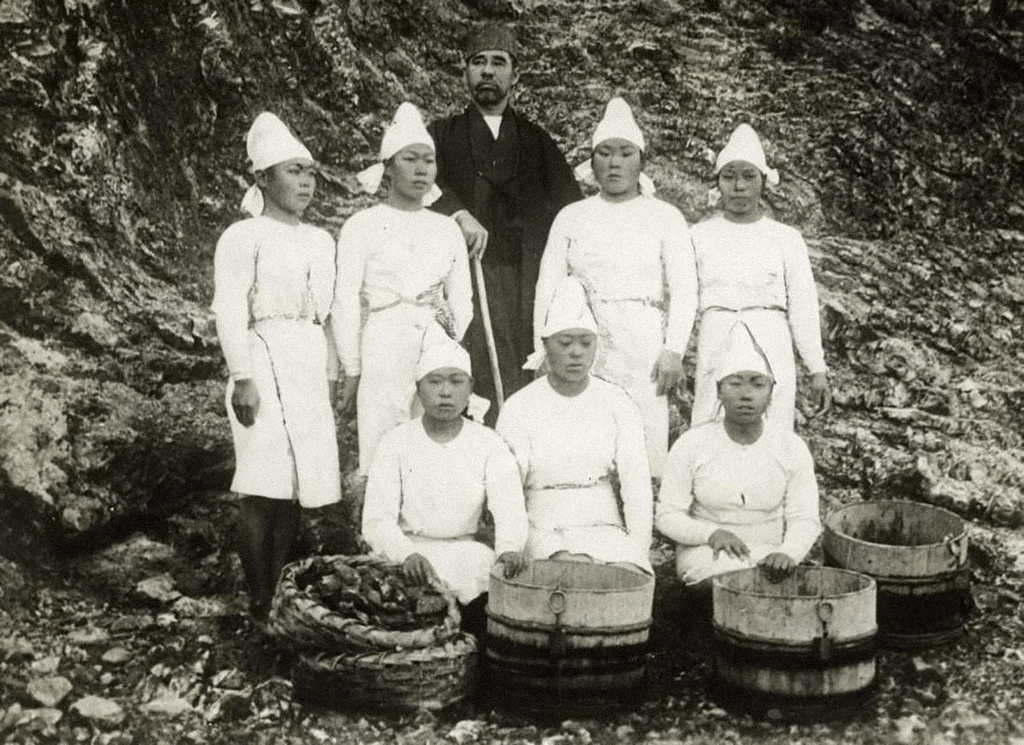
The Edo period (1603-1868) marked a turning point for ama divers as the demand and appreciation for pearls surged. The popularity of pearls led to a flourishing pearl industry in Japan, and the ama divers played a central role in its success. With their exceptional skills, they became the primary collectors of pearls, diving to great depths and enduring the challenges of the underwater environment to harvest these precious gems.
As pearl diving became more widespread, specific coastal regions of Japan became known for their ama communities. Places such as Ise-Shima, Toba, and Mikimoto became known for their ama divers and pearl diving heritage. These regions developed and celebrated the tradition, passing down the knowledge and skills from generation to generation.
Are you interested in enjoying and learning even more about traditional Japan? Check out Sakuraco! Sakuraco delivers traditional Japanese snacks, teas, and sweets from local Japanese makers directly to your door!
The Art of Ama Diving
Their mothers or experienced community divers traditionally introduced young girls to ama diving. The training process was challenging and began early, ensuring that the skills and knowledge were instilled from childhood.
One of the main aspects of ama diving is breath control. Ama divers must learn to hold their breath for extended periods underwater. They develop exceptional lung capacity and the ability to slow down their heart rate. It allows them to stay submerged for several minutes, crucial for navigating the ocean’s depths and gathering treasures without modern diving equipment.
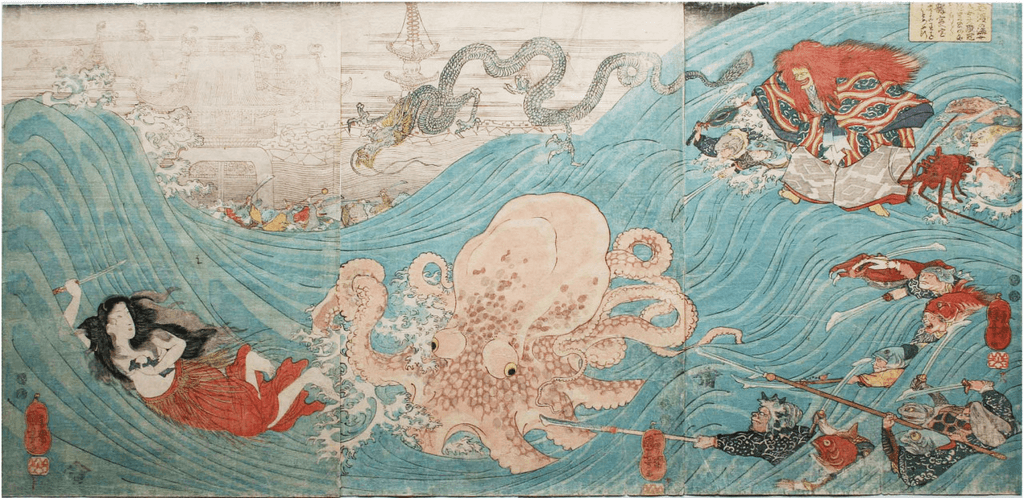
In addition to breath control, ama divers acquire a deep understanding of the underwater environment. They learn to read the currents, tides, and natural signs indicating marine life and potential diving spots. This intimate knowledge of the sea comes from years of experience and observation. It enables ama divers to navigate the waters precisely and locate the pearls they seek.
Enduring the cold temperatures of the ocean is another aspect of ama diving that requires resilience. In the early days, divers wore simple cotton diving suits called “isogi” to protect themselves from the frigid waters. These suits, typically white, helped insulate the divers and offered some defense against jellyfish stings and sharks. Ama divers also learned to adapt to the cold by controlling their body temperature through physical and mental techniques.
The training of ama divers goes beyond the physical aspects. They also learn to grow a deep respect and connection with the ocean. Ama diving is often considered a spiritual practice, emphasizing the relationship between humans and the ocean. They develop a deep understanding of the marine ecosystem and the need for sustainable harvesting practices to preserve their culture.
Ama Divers Today
While the number of active ama pearl divers has decreased, some continue to practice their craft and uphold their cultural heritage. Presently, ama diving has found a place within the tourism industry. As a result, divers share their knowledge and skills with visitors, offering a glimpse into the ancient tradition.
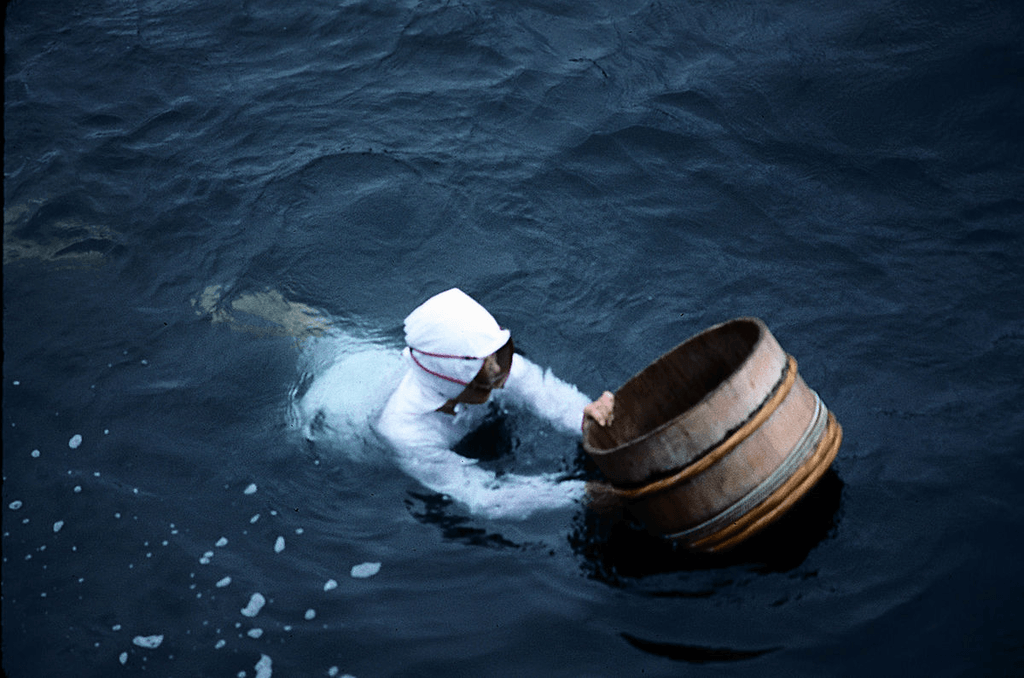
In coastal regions known for their ama diving heritage, such as Ise-Shima, Toba, and Mikimoto, demonstrations and performances by ama divers attract tourists from around the world. Moreover, visitors can witness these sea women’s breath-holding abilities, underwater agility, and graceful movements. Because of these interactions, the divers educate and inspire others with their connection to the ocean.
Presently, efforts have been made to document and preserve the knowledge, stories, and rituals of ama diving. Specifically, organizations and cultural institutions work closely with the remaining ama divers to record their experiences and techniques, ensuring the traditions are passed down to future generations. Also, exhibitions, museums, and festivals dedicated to ama diving contribute to preserving and promoting this unique aspect of Japanese cultural heritage.
What is the legacy of pearl divers?
Overall, the legacy of ama divers extends beyond their physical abilities. They embody a spirit of independence, determination, and deep respect for the ocean. While the number of active ama pearl divers has decreased, some continue to practice their craft and uphold their cultural heritage. Today, ama diving has found a place within the tourism industry. Divers also share their knowledge and skills with visitors, offering a glimpse into the ancient tradition.

By and large, the story of the ama pearl divers is one of courage, skill, and a deep connection with the ocean. These remarkable women have dived into history, leaving a legacy of strength and cultural significance. Though their numbers have become smaller, the ama divers charm the world with their tales and demonstrations.
As we celebrate their heritage, let us recognize the vital role these guardians of the sea have played in shaping Japanese culture and their enduring impact on the pearl industry. Have you ever seen or met an ama diver? What was your experience like? Let us know in the comments below!

Discover authentic flavors with Sakuraco
Get Sakuraco 

Discover authentic flavors with Sakuraco
Get Sakuraco 
Related Articles

Ebisu: The Cheerful Guardian of Luck and Prosperity
Religion in Japan involves a dizzying array of spirits and beings. These gods are inspired by ancient tales and used to symbolize nature’s bounty. However, they also profoundly impact daily life and are often sought out for help in challenging times
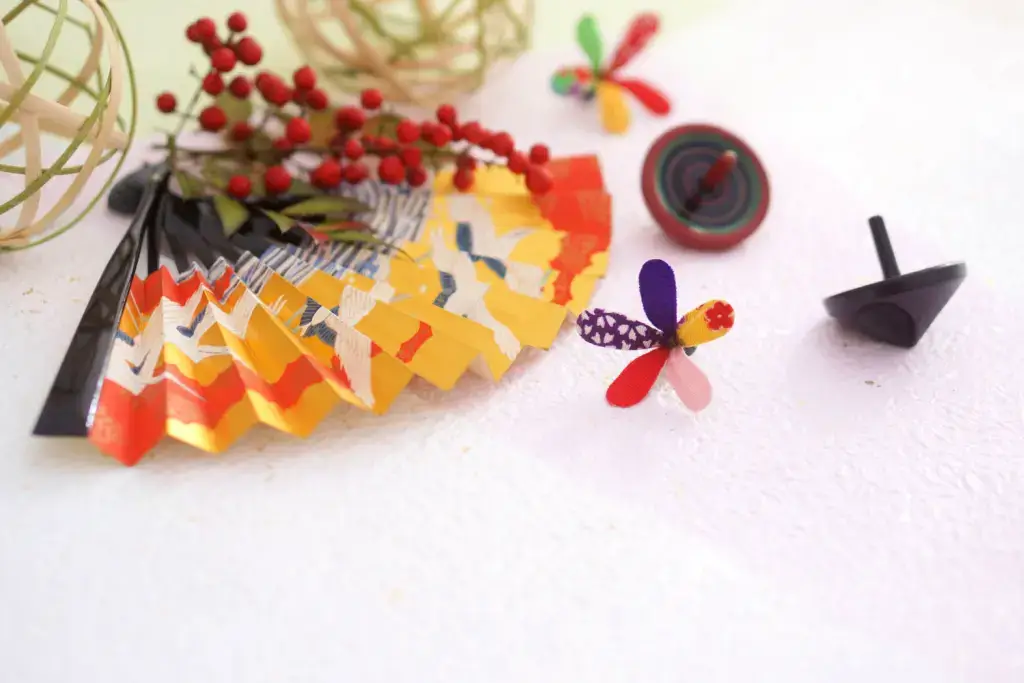
Little New Year in Japan: Discovering Koshogatsu Traditions
When people think of the Japanese New Year, they typically associate it with January 1st. It’s a time for celebrations, family, special foods, and visits to shrines for hatsumode (first prayer of the year).

Hatsumode: Why Is It Japan’s Most Important Tradition?
Hatsumode is the first visit to a shrine or temple in the New Year in Japan, and it is one of the country’s most important traditions. Every year, millions of people participate, demonstrating the profound connection between this custom and daily life.

Japanese Fish Bait: The Beautiful Art of Kebari
Kebari are traditional hand-tied flies used for freshwater fishing in Japan, especially in mountain streams where small insects form the main diet of native fish. Instead of bright plastic lures, kebari use feathers, thread, and natural materials to create subtle movements in the water.



